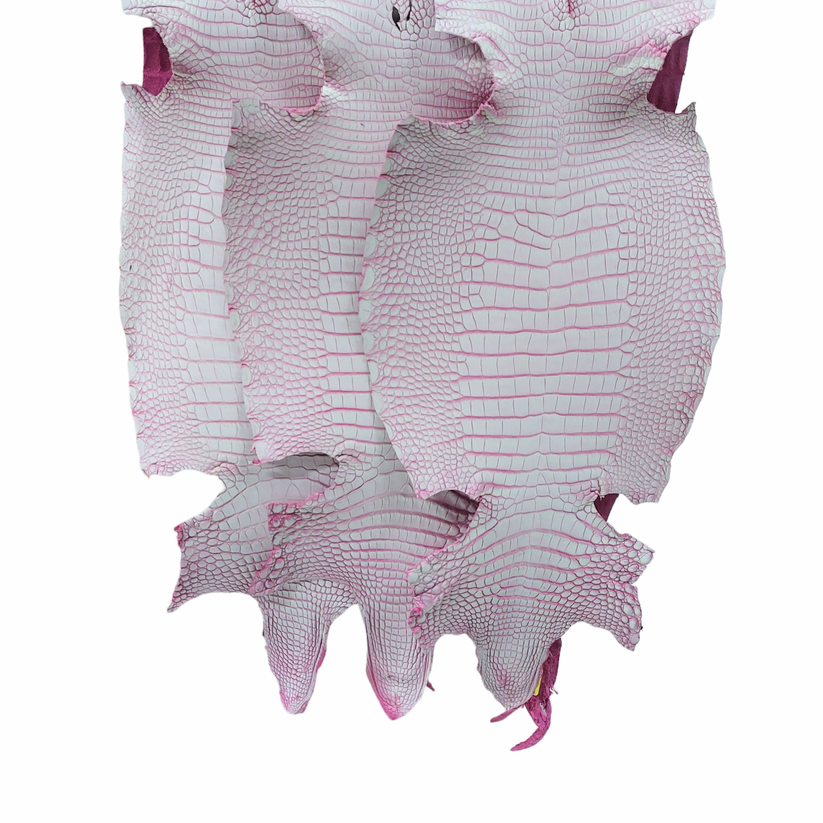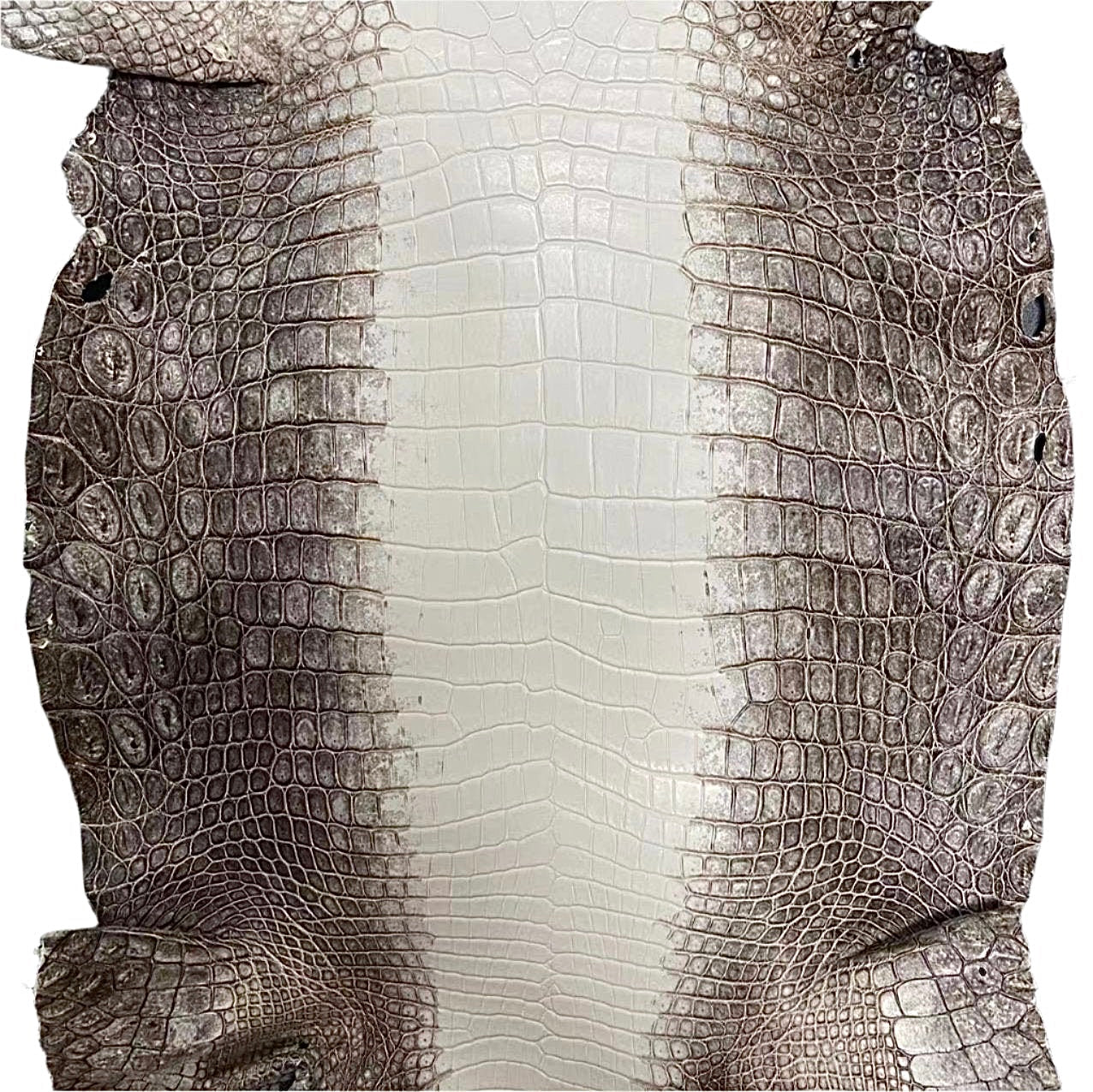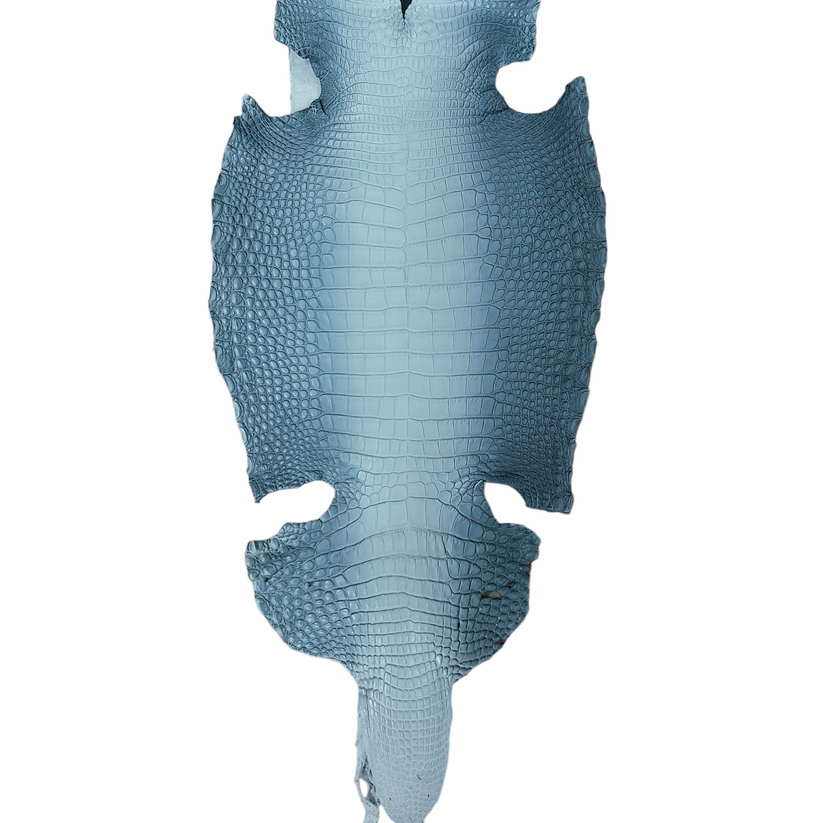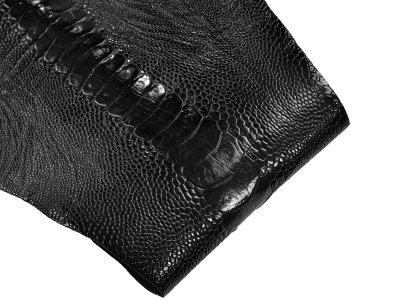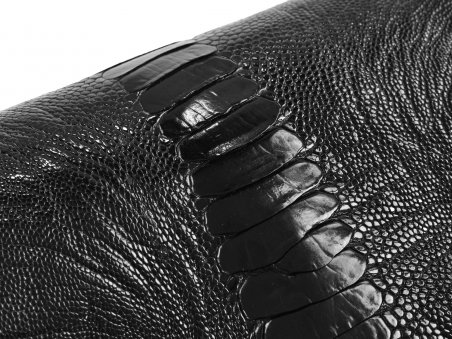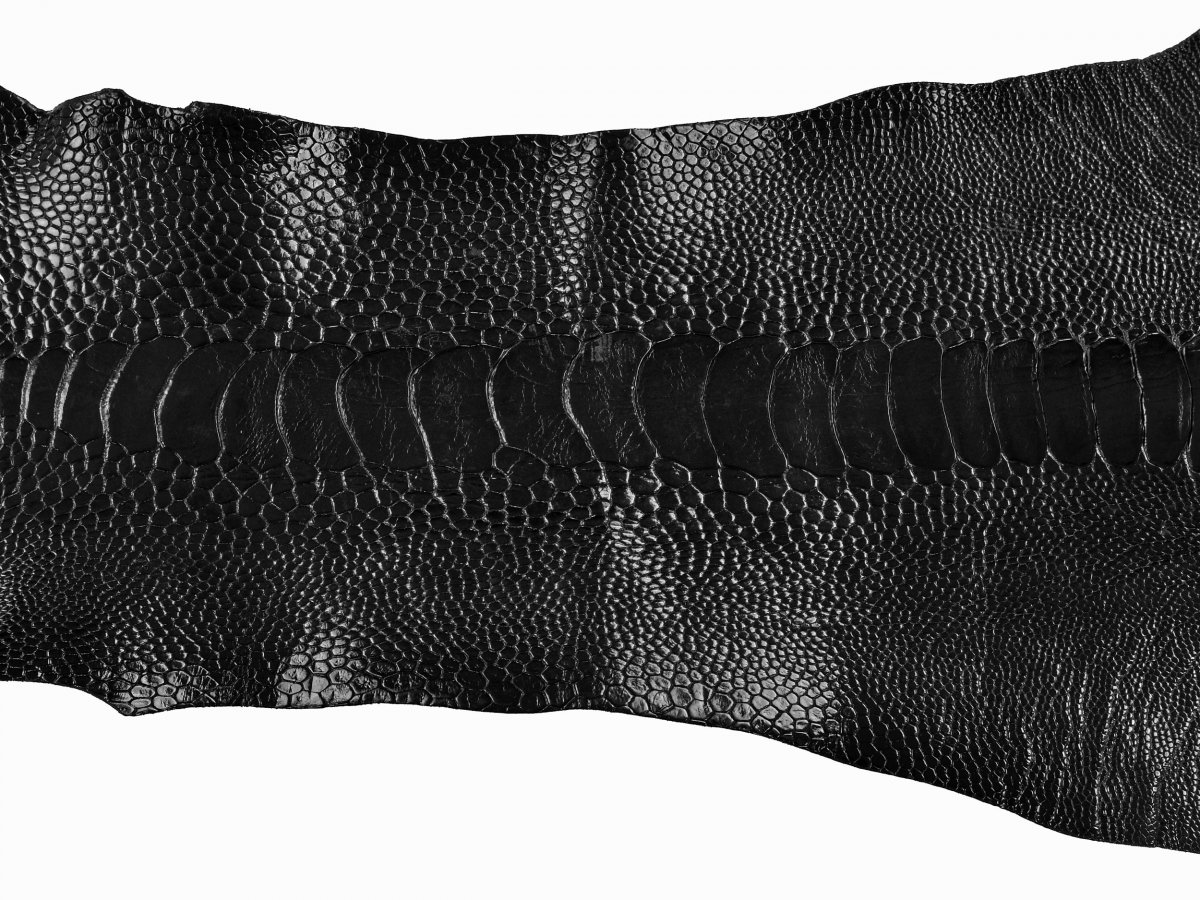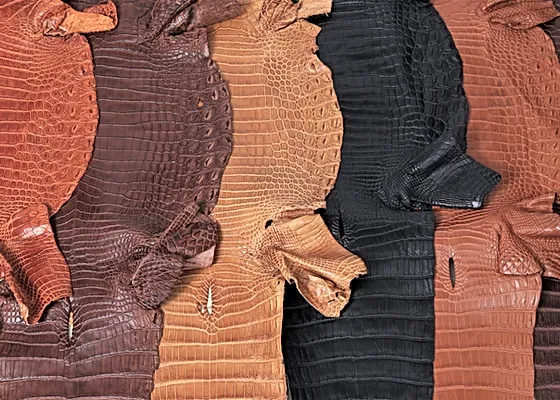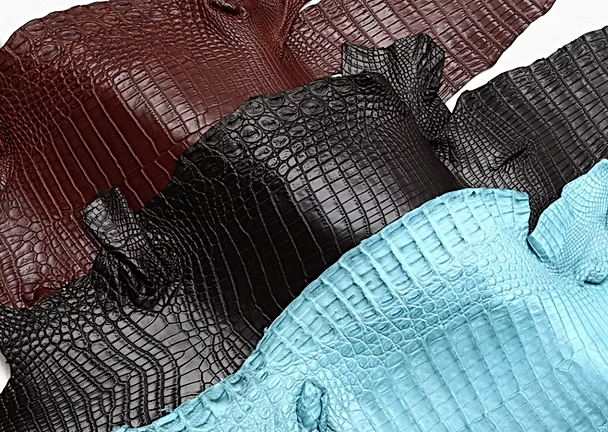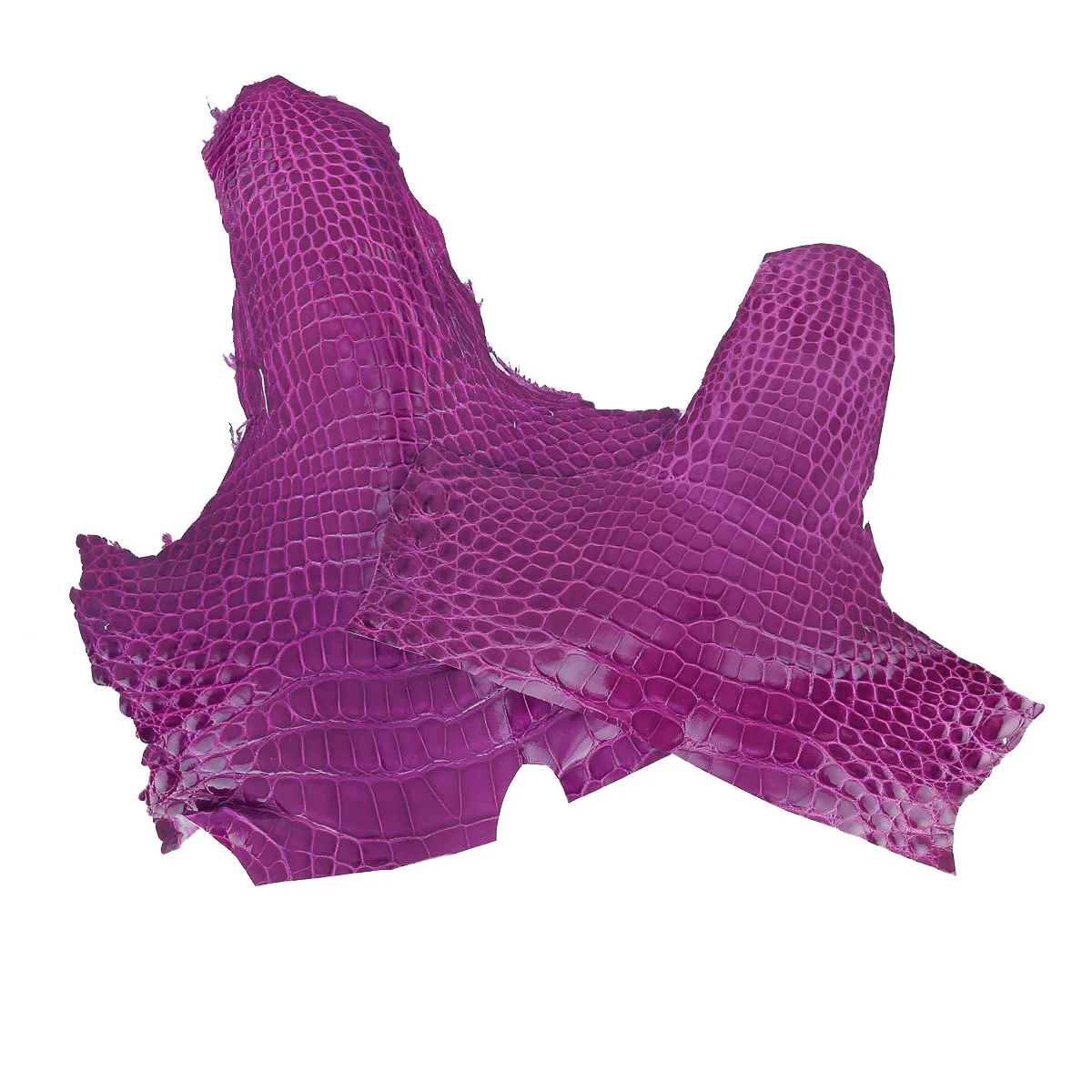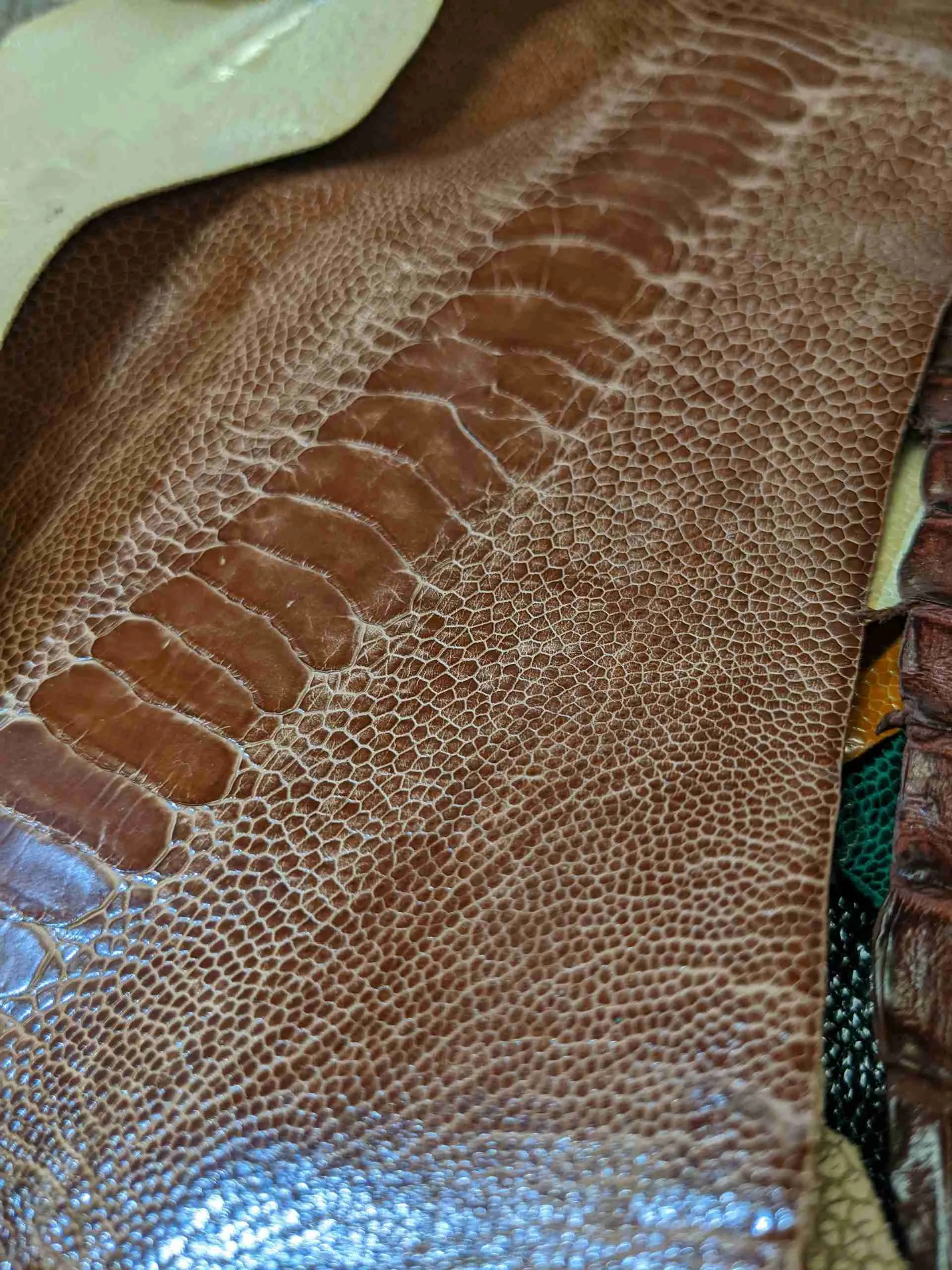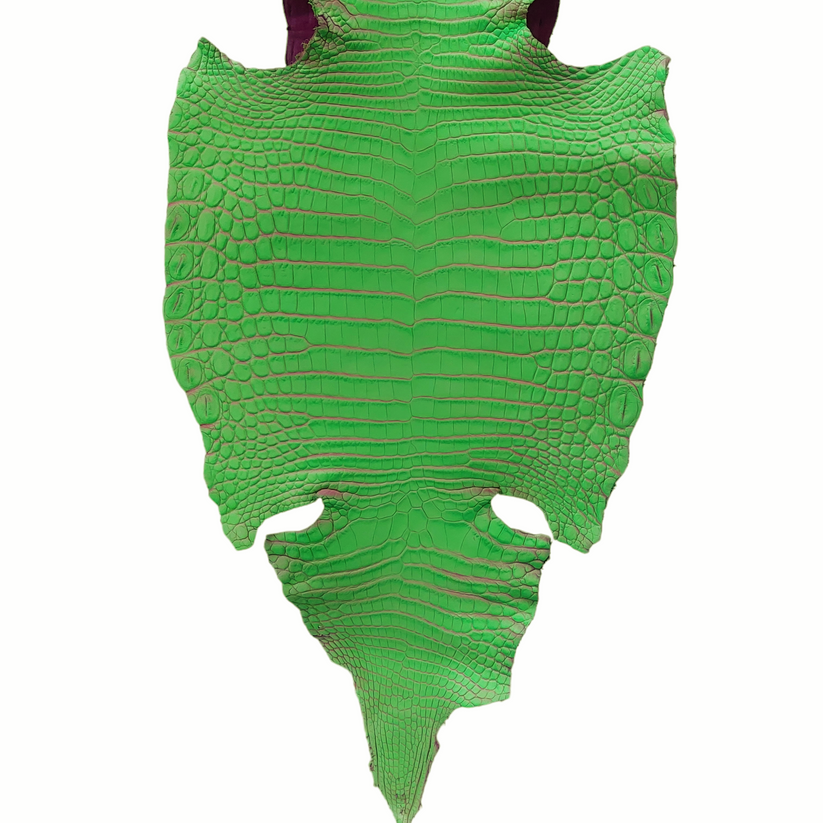Description
Exotic leathers, such as crocodile and ostrich, are highly prized in the fashion and luxury goods industries for their unique textures, durability, and distinct aesthetic appeal. Crocodile leather, with its distinctive scale pattern and rich coloration, has long been associated with opulence and sophistication. Each hide tells a story, characterized by the natural variations in its scales, which can range from small, tight patterns to larger, bolder scales, making each piece truly one-of-a-kind. This rarity, combined with its strength and longevity, positions crocodile leather as a coveted material for high-end bags, wallets, and footwear.
Ostrich leather, on the other hand, is celebrated for its soft, supple texture and unique quill patterns that evoke a sense of luxury and exclusivity. The distinct bumps, resulting from the follicle structure of the feathered skin, add a tactile dimension that is both visually striking and pleasing to the touch. Frequently used in upscale handbags, belts, and accessories, ostrich leather not only boasts a luxurious appearance but also showcases remarkable resilience, making it an excellent choice for items that are designed to withstand the test of time.
Both crocodile and ostrich leathers require ethical sourcing and meticulous craftsmanship, which ensures that artisans can harness their beauty responsibly. As sustainability and animal welfare become increasingly important considerations in the luxury market, consumers are becoming more discerning, looking for products that offer assurance of ethical practices alongside the allure of exotic leathers. In this evolving landscape, brands are challenged to combine luxury with conscientiousness, ensuring that the intricate artistry and unique characteristics of exotic leathers remain respected and celebrated while addressing contemporary ethical concerns.

